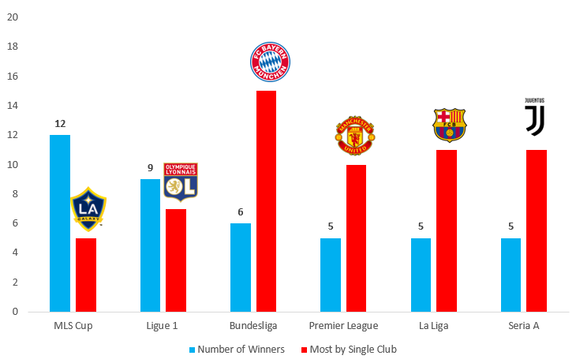The 25th season of Major League Soccer will kick-off at the end of next month and will include David Beckham's new franchise Inter Miami CF and Tennessee franchise Nashville SC. This will bring the total number of teams to 26 – the highest to date.
Inter Miami will form part of the Eastern Conference, while Nashville SC will join the Western Conference. This, despite the fact that the Nissan Stadium, home of Nashville, is more easterly than Soldier Field, the home of Chicago Fire who play in the Eastern Conference. The arrival of the new franchises, and the division they play in, got me thinking about the distances these teams must travel weekly in order to fulfill fixtures.
I recall Steven Gerrard’s time with LA Galaxy and comments by the former Liverpool player that the travel involved playing MLS was exhausting. This is especially true when one compares it to the Premier League in England.
In early January, Liverpool played Everton in an FA Cup 3rd round game. During a stoppage in play, a drone above the stadium moved slightly northwards, and Everton’s Goodison Park came into view. There is less than 1 mile between the two stadiums. For newly recruited players of Inter Miami, their 'derby match' with Orlando City SC will require a 205-mile journey north. This is just shy of Liverpool visiting a London club, which is hardly a derby.
The distances a franchise will travel in the MLS arequite something. In this post I considered only the Eastern Conference. The Western Conference would appear far worse. New players for Inter Miami have some serious travel ahead, given Miami’s location. After Orlando, the next closest venue is the 580-mile trip to the magnificent Mercedes Benz Stadium in Atlanta, a round trip of nearly 1,200 miles. This is like Liverpool heading to Cologne in Germany.
Inter Miami players will have at least seven trips in the Eastern conference that exceed 1,000 miles one way! The longest being the 1387-mile distance to play Montreal Impact – the greatest distance between two franchises in the Eastern Conference. Liverpool to Rome is almost the exact same distance.
Considering all franchises for the conference, there is probably just one derby, by European standards that is. The 20 miles separating the Yankee Stadium from the Red Bull Arena in New Jersey, homes of the New York City and New York Red Bulls.
Travel distances can be found to have significant impact on performance. I will consider the impact this has on match outcomes in the MLS in a future post. For new recruits of Inter Miami, they better be ready to travel. Although, Nashville SC will make this look short. More to follow on this.


 RSS Feed
RSS Feed